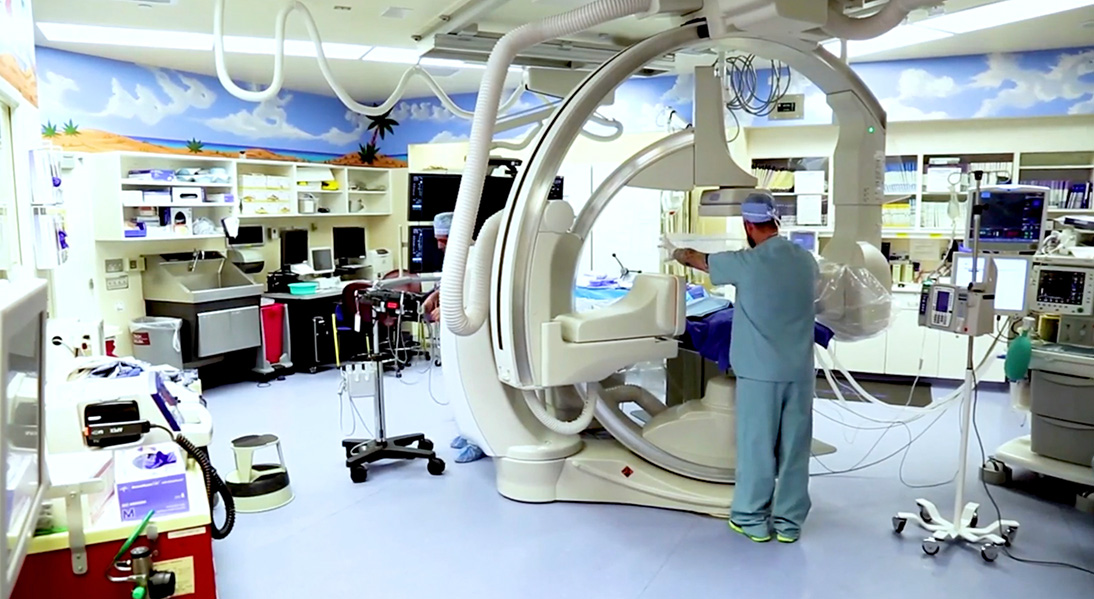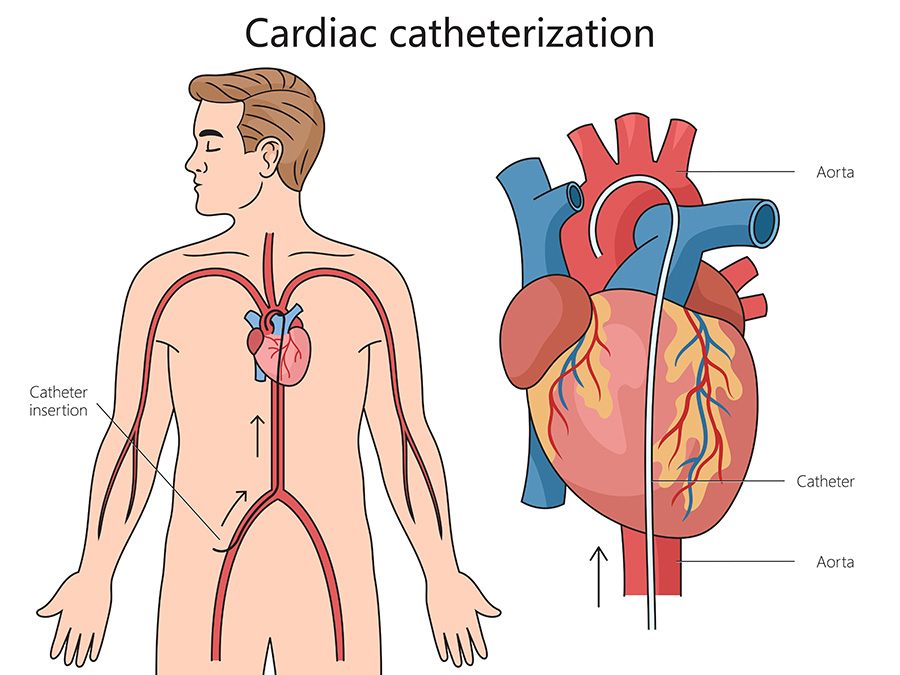Cardiac Catheterization at Rady Children’s Hospital

Our state-of-the-art cardiac catheterization laboratory and MRI scanner provide diagnostic and interventional cardiac catheterization for patients of all ages, from newborns to adults, with congenital heart disease.
We use the most advanced equipment, allowing procedures to be performed with reduced radiation and enhanced visualization. For instance, our new 3D rotational angiography system lets us view a child’s anatomy from multiple angles, clarifying complex issues. This system also supports simultaneous CT scanning, visualizing structures in the chest beyond the heart, such as airways and lungs. The integration of MRI and cardiac catheterization enables not only visualization of anatomy but also a better understanding of physiology. A team of pediatric cardiac interventionists, led by Howaida El-Said, M.D., Ph.D., performs these procedures using the most advanced technology.
Cardiac Catheterization Procedures

Diagnostic catheterization is used when echocardiography or other imaging methods do not adequately show the heart and related blood vessels. It also helps us understand how the heart and blood vessels function.
Interventional catheterization treats various congenital heart defects, such as narrowed blood vessels and heart valves, abnormal blood vessels, and abnormal openings between heart chambers. Conditions treated include coarctation of the aorta, pulmonary branch stenosis, pulmonary valve stenosis, aortic valve stenosis, patent ductus arteriosus, atrial septal defect, and ventricular septal defect. Devices like coils, septal occluders, and stents are commonly used. Our lab offers advanced procedures that can reduce the need for surgery, such as PDA stenting, which leads to shorter hospital stays and may improve developmental outcomes. Premature infants as small as 500 grams can undergo PDA device closure to help them come off ventilator support and improve NICU progress. We also perform complex interventions on pulmonary veins and treat unusual anatomy, such as Abernathy malformation. Additionally, we offer percutaneous valve placement in the pulmonary position, restoring ventricular function and promoting early recovery.
General anesthesia is provided for nearly all procedures, with the necessary equipment integrated into the lab.
Diagnostic catheterization typically takes about two hours, while interventional catheterization lasts three to four hours.
Patient Instructions
Since patients will receive anesthesia, they should follow specific instructions from the cardiology team regarding eating or drinking before the procedure.
Patients should arrive at the hospital one and a half to two hours before the scheduled procedure time. This allows time for check-in, completing required paperwork and consent forms, and preparation. On the day of the procedure, patients check in at the pre-surgical area of the hospital.